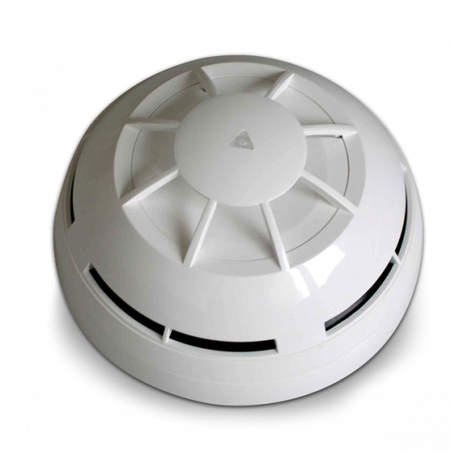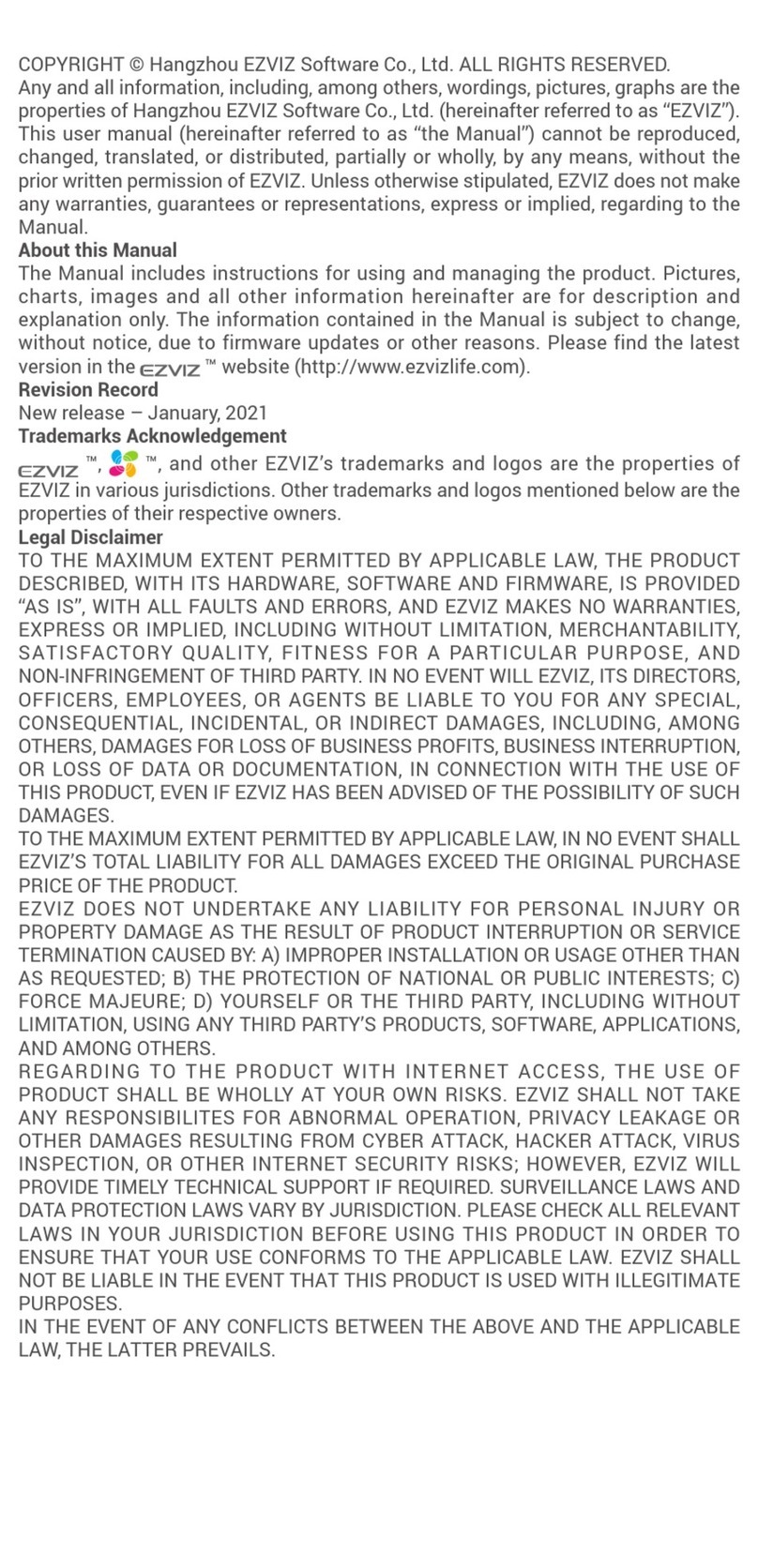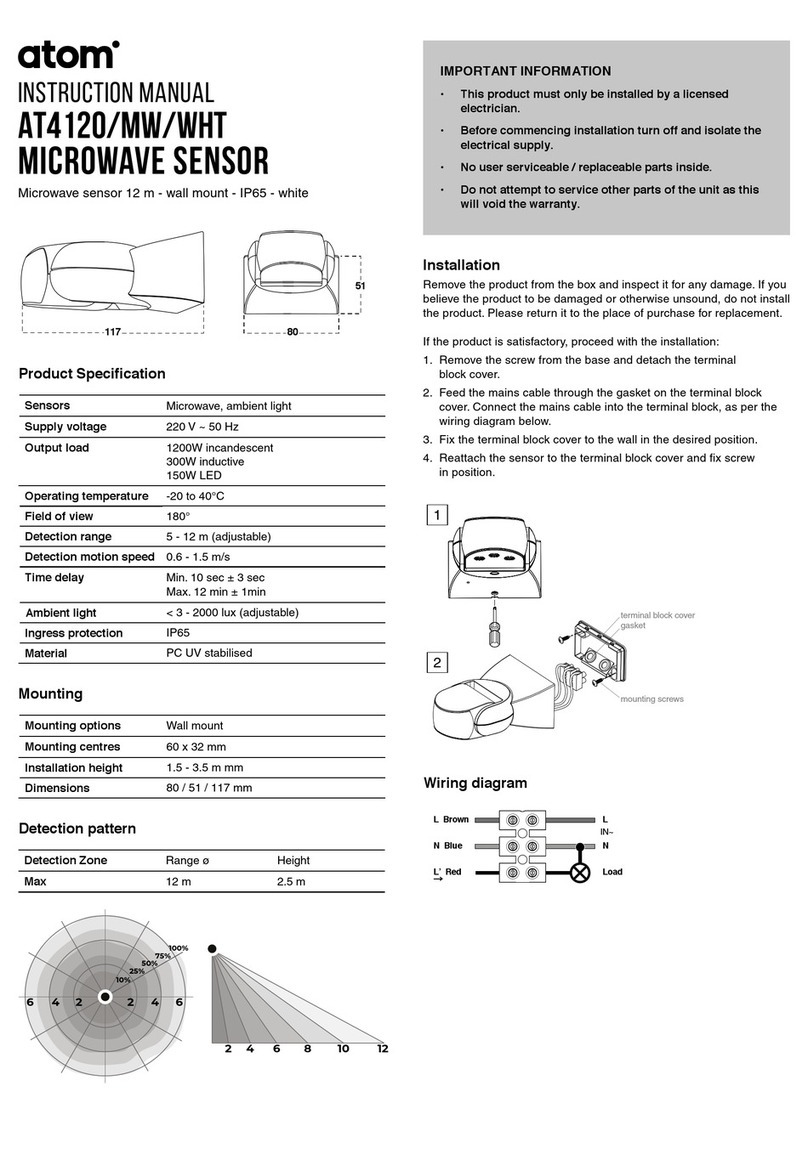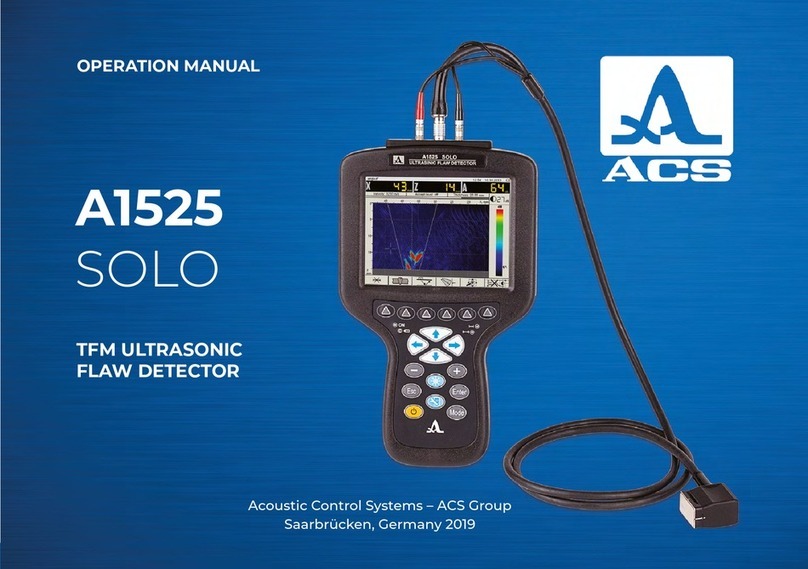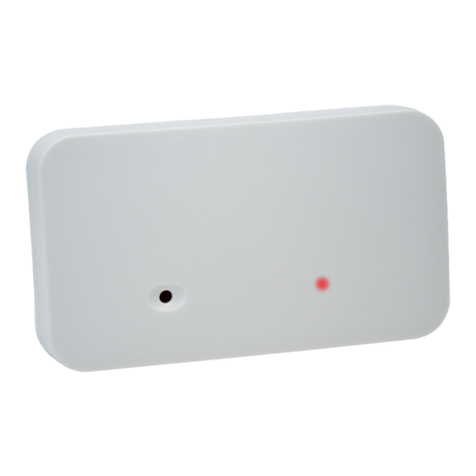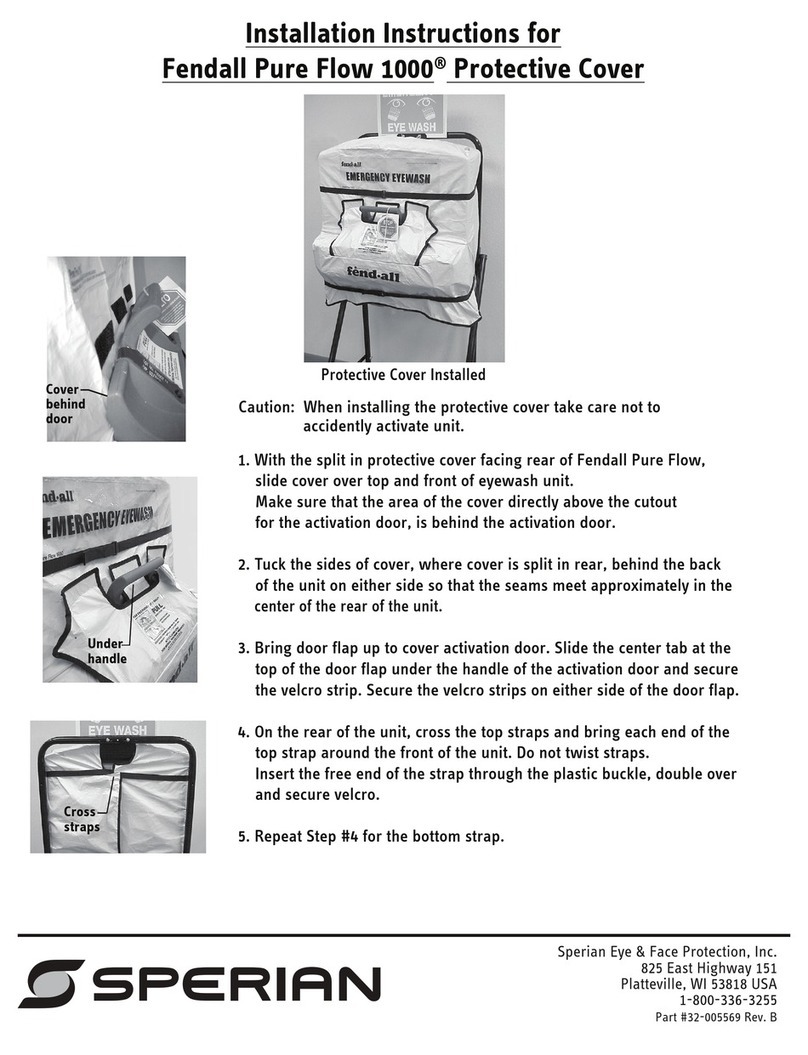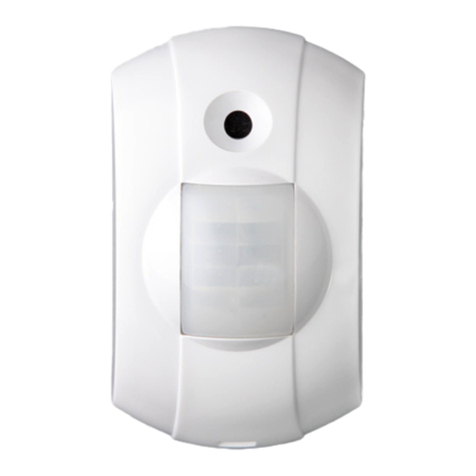C-SCOPE L2 Series User manual

INSTRUCTION MANUAL
CXL2 LOCATOR
DXL2 LOCATOR
MXL2 LOCATOR
SGA2 SIGNAL GENERATOR
SGV2 SIGNAL GENERATOR
MXT2 TRANSMITTER

Beware of multiple services. C.Scope Locators will not always indicate services
that are close together or one above the other.
Do not use the equipment in areas where hazardous gases may be present.
Check for underground services before using the Earth Stake.
ALWAYS
EXCAVATE
WITH CARE
C.Scope Locators detect services radiating a detectable signal.
There may be some services that do not radiate and cannot be located.
Do not use the equipment outside of the temperature range -10˚C to +50˚C
as the batteries may cease to function adequately.
Geographical conditions such as hills and mountains may effectively screen signals
and prevent a detectable Radio signal.
C.Scope Locators alone will not always locate every service.
Use a Generator or Transmitter wherever possible.
The C.Scope Generator/ Transmitter leads UST NOT be connected directly to
a live service.
Performance may be impaired by unusually strong electromagnetic fields.
Do not hold the Locator earpiece close to the ear for extended periods.
WARNINGS
Always make sure that the Locator and Generator/ Transmitter are set to the same
frequency when used together.
Do not touch the metal of the C.Scope Generator/ Transmitter Crocodile Clips or
of the Plastic Pipe Tracer terminals when in use.
2
It is recommended that the operation of the Locator and Generator/ Transmitter is regularly chec ed (see pages 52-55).

Contents
Warnings 2
Features
CXL2, DXL2 and XL2 4-5
SGA2, SGV2 and XT2 6-7-8-9
Locator Operating Modes
Power 10
Radio 11
All
Scan 12-13
Generator/ Transmitter 14
Using the Locator
Batteries
Alkaline and Rechargeable 15
Automatic Daily Self Test 16-17
Holding the Locator 18
Searching 19
Pinpointing 20
Tracing 21
Using the Generator/ Transmitter
Output Power 22
Frequency 23
Batteries
Alkaline and Rechargeable 24
Direct Connection 25-26
Street Lighting/ Furniture 27-28
Signal Clamp/ Injector 29
Searching 30
Tracing 31
Induction 32
Searching 33-34
ultiple Services 35
Inductive Sweep 36
Pipe Tracing using a Sonde 37
Sonde Batteries 38-39
Tracing 40-41
Plastic Pipe Tracer 42-43
Depth Measurement
Line 44-45
Sonde/ Plastic Pipe Tracer 46
Signal Current Measurement 47-50
Data Logging 51
Function chec s
Locators 52-53
Generator/ Transmitter 54
Depth 55
Maintenance/ General symbols 56
Specifications
Locators 57
Generators/ Transmitter 58
Support Services 59
3

Digital Display
with automatic acklight
Detacha le Loudspeaker
On/ Off Switch
Sensitivity Control
4 Position Mode Switch
P: Power
R: Radio
G/T: Generator/ Transmitter
A: All Scan
Battery Compartment and
Data Access Connection
Replacea le Wear Foot
CXL2 DXL2 XL2 Locator Features
4
The C.Scope CXL2, DXL2 and XL2 Locators are Pipe and Cable Locators that
can provide precise information about the position and depth (DXL2 and XL2 only)
of buried services. The combination of locating modes ensures buried services
are detected quickly and reliably.
AUTO ATIC DAILY SELF TEST
The CXL2, DXL2 and XL2 Locators have an automatic
daily self test feature which is activated the first time that
the Locator is switched on each day. The display indicates
‘ ’ and a test countdown when performing the test.
(See pages 16-17 for more details).
DATA LOGGING
A data logging feature allows a record to be kept of all
Locator activity for analysis on a PC. The Bluetooth™
version also allows live map location and other functions.
(See page 51 for more details).

5
CXL2 DXL2 and XL2 Locator Features
Generator/ Transmitter
Mode Indicator
Battery Condition Indicator
Signal Current Button
(MXL2 only)
Depth Measurement Button
(DXL2 and MXL2 only)
Power Mode Indicator
Frequency Button (MXL2 only)
All Scan Mode Indicator
Radio Mode Indicator
Depth (DXL2 and MXL2 only)
or Signal Current Measurement
(MXL2 only)
Sonde Depth Mode Indicator
(DXL2 and MXL2 only)
Signal Strength Bar Graph
Self Test Indicator

Auxiliary 10m Earth Lead
SGA2/SGV2 Signal Generator and XT2 Transmitter Features
6
The C.Scope SGA2 and SGV2 Signal Generators are an
ideal accompaniment to the CXL2 and DXL2 Locators.
The SGA2 has the facility of high and low output power and
can operate with a pulsed or continuous output signal.
The SGV2 additionally has a display showing the battery
condition and power output indication. The SGV2 has four
levels of output power that can be selected by the user.
The C.Scope XT2 Transmitter is an ideal accompaniment
to the XL2 Locator.
The range of operating frequencies and adjustable
power output is designed to make the XL2 and XT2
combination an extremely versatile Pipe and Cable Locator
that is able to tackle many varied locating tasks.
Batteries
Accessory Tray
Accessory Tray Holding Clips
Earth Stake
Auxiliary Earth Lead Socket
Direct Connection Socket
Connection Magnets
Crocodile Clips

7
SGA2 Signal Generator Features
On/ Off
Control
Loud/ Mute
Control
Output Power
Increase Control
Output Power
Decrease Control
Pulsed/ Continuous
Output Control

SGV2 Signal Generator Features
Connected Mode Indicator
Battery Condition
Indicator
Loud/ Mute Setting
Indicator
Induced Mode Indicator
Output Frequency Indicator
Signal Strength
Indicator
8
On/ Off Control
Loud/ Mute
Control
Output Power
Increase Control
Output Power
Decrease Control
Pulsed/ Continuous
Output Control
Output Power Level
Indicator

Connected Mode Indicator
Battery Condition
Indicator
Loud/ Mute Setting
Indicator
Induced Mode Indicator
Output Frequency Indicator
Signal Strength
Indicator
On/ Off Control
Loud/ Mute
Control
Frequency Control
Output Power
Level Control
Pulsed/ Continuous
Output Control
Output Power Level
Indicator
9
XT2 Transmitter Features

Locator Operating odes: Power ode
NOTE Generally these services should be detectable using the Radio or Generator/ Transmitter odes.
In Power ode the Locator detects power signals.
These power signals are present on all current carrying
electricity cables although not all are detectable. Power
signals may also flow along other conductors such as
metal gas and water pipes, telecom cables, metal fences
and railway tracks.
Limitations of Power Mode
Not all electricity cables can be found using the Power
ode. Here are the most important examples of
electricity cables that may not be detectable in the
Power ode:
Street lighting cables. When the lights are off, no
current flows and so no power signal is created.
Supplies to buildings or plant using very little or no
electricity may not have a detectable power signal.
Pot-ended or capped cables. These will never have any
current flowing through them but are possibly still live.
Disused or abandoned cables.
A few high voltage electricity cables. These can be
‘well balanced’, electrically and therefore radiate little
or no power signal.
Direct Current cables (such as those found on some
railway systems). These do not create their own
power signals.
Cables more than 3 metres deep.
WARNING Locators can only detect services radiating a detectable electromagnetic signal.
There may be some services that do not radiate these signals and cannot be located.
WARNING Absence of a power signal does not mean the service is not live.
10

11
Locator Operating odes: Radio ode
NOTE ost buried metallic services not found in Radio ode should be detectable by using Generator
ode with the Generator or Transmitter ode with the Transmitter.
WARNING Locators can only detect services radiating a detectable electromagnetic signal.
There may be some services that do not radiate these signals and cannot be located.
In Radio ode, the Locator detects signals from various
radio transmitters. These signals flow through the
ground and will tend to follow the line of least resistance
such as a buried metallic service. When this happens
the service can often be detected by using the Locator
in Radio ode.
Limitations of Radio Mode
Not all services will be detectable in Radio ode.
A strong radio signal present on one service may
be masking a weaker radio signal present on an
adjacent service.
It is not normally possible to determine what the
service is in Radio ode, only it’s position.
Radio signals do not favour one utility over another.
The depth of the buried service CANNOT be judged
by the strength of the radio signal alone.
Normally it is only possible to detect radio signals
present on services up to 2 metres deep.
A short service may not have enough signal to
be detected.

12
Locator Operating odes:
All
Scan ode
In
All
Scan ode, the Locator detects at ALL frequencies
in a wide band. Sometimes a signal that is outside of the
frequency range of the other search modes (Power, Radio,
and Generator/ Transmitter)will be present on a buried
metallic service.
All
Scan ode is a useful additional
search mode to employ as it may detect these ‘extra’
signals as well as the Power, Radio and Generator/
Transmitter signals.

13
Locator Operating odes:
All
Scan ode
Limitations of
All
Scan Mode
All
Scan ode has exactly the same limitations as those
listed for the Power and Radio odes:
Street lighting cables when the lights are switched off,
supply cables to buildings or plant using little or no
electricity, pot-ended or capped cables, well balanced
high voltage cables and direct current cables may all be
missed on the
All
Scan ode.
A strong
All
Scan signal present on one service may mask
a weaker
All
Scan signal present on an adjacent service.
It is not normally possible to determine what the service
is in
All
Scan ode, only its position.
All
Scan signals do not favour one utility over another.
The depth of the buried service CANNOT be judged by
the strength of the
All
Scan signal alone.
Normally it is only possible to detect
All
Scan signals
present on services up to 2 metres deep.
A short service may not have enough signal to be detected.
WARNING Using the Power and Radio odes may be more effective in areas where there are many services
radiating an
All
Scan signal.

Locator Operating odes: Generator/ Transmitter ode
In Generator/ Transmitter ode the Locator detects conductors
radiating a signal applied by the Generator/ Transmitter or detects
a signal radiated by a sonde.
The Generator/ Transmitter provides a means of applying a known
signal to buried metallic services which can then be detected using
the Locator. By detecting this signal it is possible to locate, trace
and identify the pipes or cables that may be carrying it.
There are a variety of methods by which the Generator/ Transmitter
signal can be applied to buried services:
Direct Connection using leads connected to the Generator/
Transmitter.
Induction without physically connecting to a service via the
Generator/ Transmitter radiated signal.
Signal Clamp connected to the Generator/ Transmitter.
Signal Injector connected to the Generator/ Transmitter.
Signal Hopping using the Direct Connection leads to couple onto
a service without physically connecting.
WARNING Locators can only detect services radiating a detectable electromagnetic signal.
There may be some services that do not radiate these signals and cannot be located.
14
Direct Connection
Induction

15
C.Scope Locators can be powered by either eight standard alkaline
or by eight standard Nickel- etal Hydride rechargeable (Ni H) AA (LR6)size batteries.
Locator Battery Chec
Switch the Locator on by pulling up on the On/Off trigger positioned on the underside of the handle.
The Locator should emit a clear audible battery check tone for one second and the display should come on.
Check the battery level indicator in the bottom
left hand corner of the display. If there is only
one segment or no segments of the indicator
filled in then the batteries will need to be
renewed or recharged before locating work
can begin.
Changing Locator Batteries
Push the two clips back to release the battery compartment door. Remove ALL EIGHT used batteries and replace with
new ones. Be careful to insert the new batteries the correct way round in the holder. Replace the holder in the battery
compartment making sure that the two terminals on the holder make contact with the two terminals within the battery
compartment. Close the battery compartment door securely.
Using the Locator: Batteries Alkaline and Rechargeable
WARNING Do not change batteries in confined spaces where gas may be present.
WARNING Do not mix old and new or different types of batteries.
NOTE A spare battery pack can be carried inside the battery compartment.
NOTE Only use alkaline or Nickel- etal Hydride (Ni H) rechargeable AA (LR6)size batteries.
NOTE Dispose of the used batteries safely in accordance with local regulations.
NOTE The Locator will carry out an automatic Self Test when it is
switched on for the first time each day (see pages 16-17 for full details)
Battery Levels OK replace / recharge
atteries

Using the Locator: Automatic Daily Self Test
The CXL2, DXL2 AND XL2 Locators have an in-built automatic Daily Self Test function.
This tests the Locator’s circuits and receiving aerials for correct performance.
The Self Test is automatically performed the first time the Locator is switched on each day
and takes approximately four seconds. The Locator will then be ready for use.
The Self Test process is indicated by ‘ ’ appearing on the display.
In the top left hand corner of the screen a countdown timer shows
the progress of the test.
16
NOTE When turning the Locator on for the first time it is important that no Signal Generators, Transmitters
or Sondes are operating within 5metres of the Locator.
NOTE Try not to switch the Locator on for the first time in an area with unusually high Power signals such
as next to an electricity transformer.

17
Using the Locator: Automatic Daily Self Test
After the Locator has successfully completed the
Self Test the Locator is ready for use as per normal.
If the Locator has failed the Self Test the Warning symbol
will appear in the bottom right hand corner of the screen.
If the error code: ‘ ’ is also displayed then this indicates
that there is either too much background interference
for the Self Test process to safely complete or there is
a Generator/Transmitter or Sonde transmitting nearby
which should be turned off.
In this situation, switch the Locator off and move to
a different area and the Locator will then automatically
repeat the Self Test when switched on. The Locator will
continue to repeat the Self Test process after every ‘fail’
and the Warning symbol will continue to stay on the
display until a successful test is carried out.
If the Locator continues to fail it’s Self Test then this
is indicating that there is a fault and the Locator should
be withdrawn from service. Contact C.Scope or a C.Scope
Authorised Service Centre for advice.

Your middle or little finger should be used to squeeze,
and hold on, the On/Off trigger.
Your index finger will then be free to adjust the
Sensitivity Control.
When in use the Locator should always be held upright.
NEVER swing the Locator such that it moves away from
the vertical. A single audible beep is sounded to indicate
if the Locator is being used incorrectly.
Using the Locator: Holding the Locator
18
incorrect correct
90O

19
There are three stages to the locating process; searching,
pinpointing and tracing
1. Turn the ode Switch to the appropriate mode.
2. Hold in the On/Off trigger. The Locator should emit the audible
battery test tone and the digital display should come on. Check
the battery level indicator to confirm the batteries are usable.
3. Rotate the Sensitivity Control fully clockwise to its maximum
setting as indicated by the arrow on the control.
4. Carry out the search using a grid pattern as shown in the
diagram. Walk slowly and keep the Locator upright at all times
and stationary by your side.
5. As you approach the area in which there is a signal the
Locator will emit an audible response and show a visual
response on the display.
6. Keep walking until the audible and visual responses disappear.
Using the Locator: Searching
NOTE This search technique applies only to the
Power, Radio and
All
Scan modes. See ‘Using the
Generator/ Transmitter’ for the correct search pattern
when using Generator/ Transmitter ode.
NOTE Sometimes the Locator will give an audible
response and strong (full scale) visual response across
the whole of the search area. In this case turn the sensitivity
down slightly and repeat the search using the same grid pattern.
Search Grid Pattern

Having found a signal the next step is to pinpoint the source.
The closer the Locator is to the signal source the stronger
the response.
To Pinpoint a Signal
1. Keeping the Locator vertical, walk through the area of the
signal response. If the visual response goes up off the scale
then stop and reduce the sensitivity of the Locator slightly
before continuing.
2. The width of the signal response will shrink as the
sensitivity is reduced. Once it is reduced enough then a
clear peak response will be seen on the display as the
Locator traverses the service. The Locator is positioned
directly above the buried service when the display is at its
highest (peak)reading.
3. Carefully rotate the Locator over the peak reading until the
visual response falls to a minimum. The Locator will now be
roughly IN LINE with the direction of the buried service.
4. ark the position of the buried service.
Using the Locator: Pinpointing
NOTE The amount of sensitivity adjustment needed to pinpoint a service can vary depending on the mode being
used, the signal strength and the service depth.
20
This manual suits for next models
6
Table of contents
Popular Security Sensor manuals by other brands
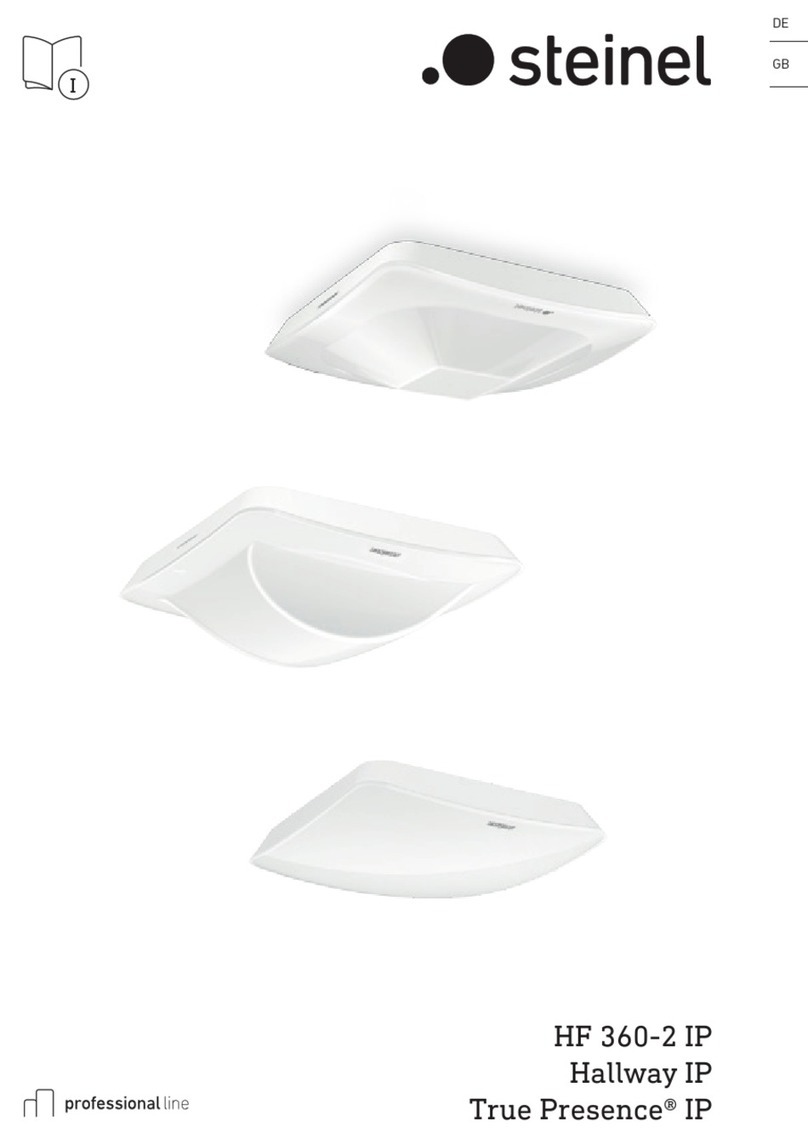
STEINEL
STEINEL professional Series manual
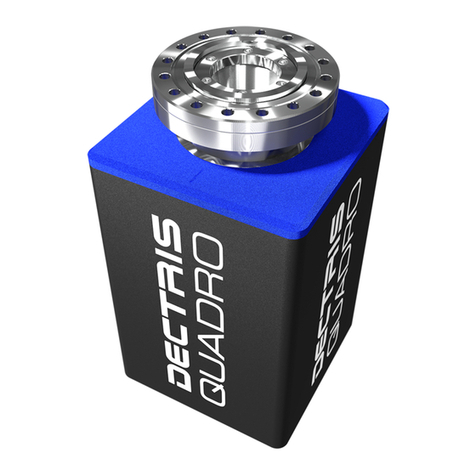
Dectris
Dectris QUADRO user manual
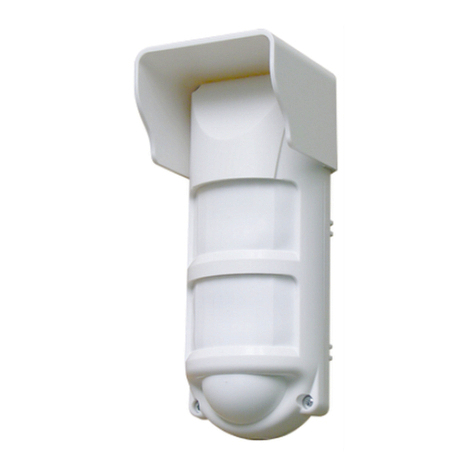
Rielta
Rielta PYRONE-8-RK installation guide
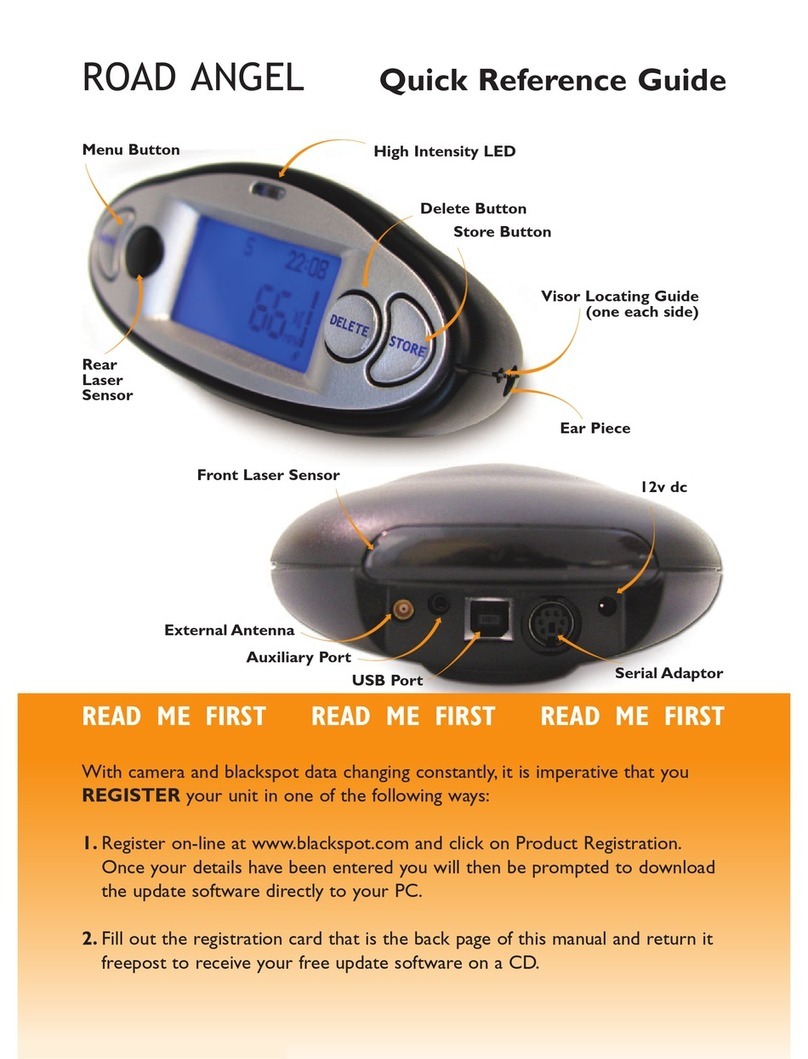
Blackspot Interactive
Blackspot Interactive ROAD ANGEL Quick reference guide

Aritech
Aritech RF-EV1012-K4 Installation sheet
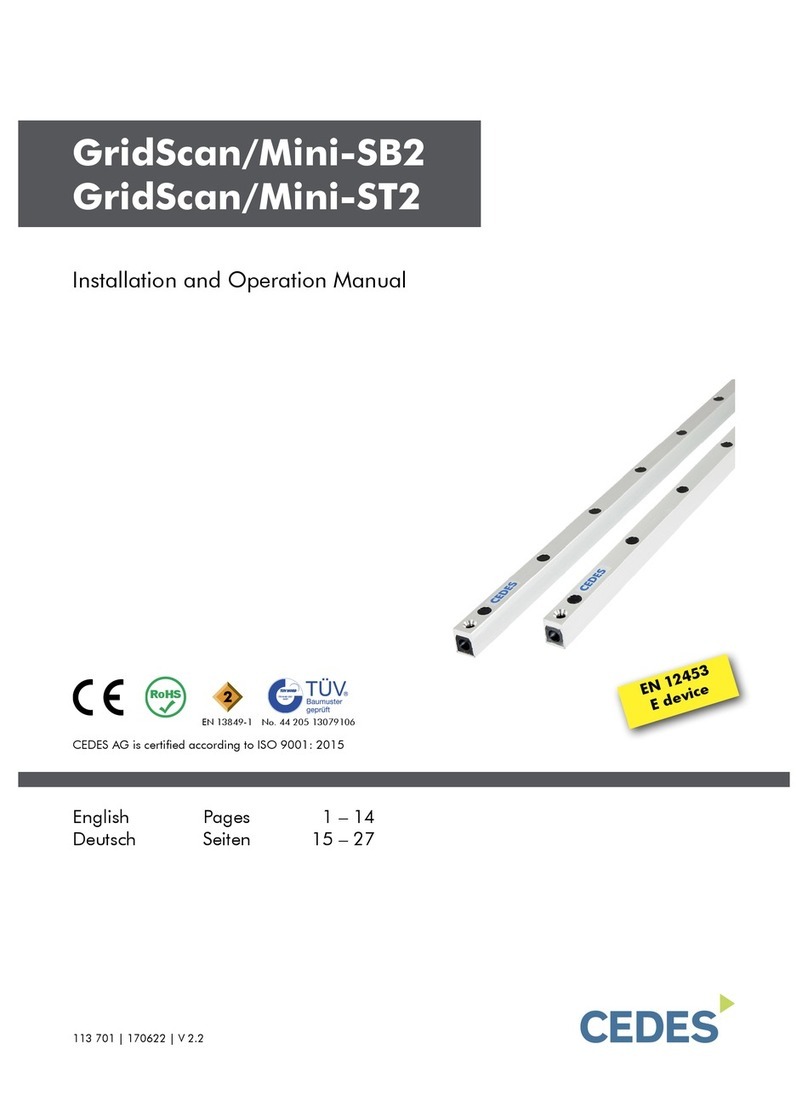
Cedes
Cedes GridScan/Mini-SB2 Installation and operation manual
